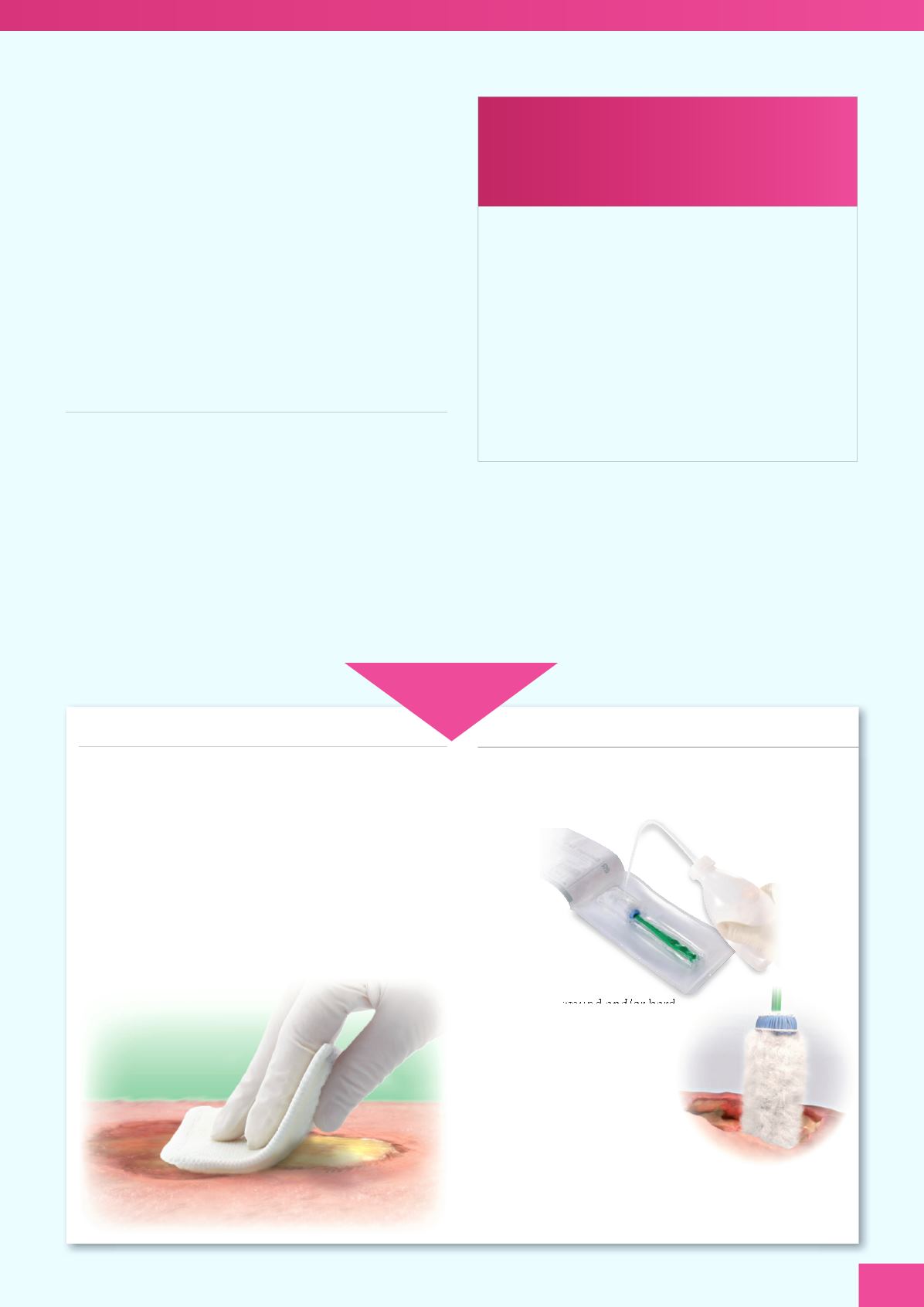
National Institute for Health and Care Excellence (2014)
The
Debrisoft
®
monofilament debridement pad for use in acute and
chronic wounds
(MTG17). NICE, London. Available online:
www.nice.org.uk/MTG17Wiegand C, Reddersen K, Abel M, Muldoon J, Ruth P, Hipler U-C
(2014)
Determination of the reduction of biofilm in vitro during
wound cleansing using a monofilament debrider, a cleansing system
with poloxamer, and conventional cotton gauze
. Poster presentation
at Wounds UK, Wound Care Conference, Harrogate
Learn more about Debrisoft and
Debrisoft Lolly and gain CPD
points with the JCN learning zone
Reinforce and reflect on what you know about
Debrisoft and Debrisoft Lolly by completing the JCN
e-learning module and answering the 10 online
multiple choice questions. If you get 70% correct,
you can download a certificate as evidence of your
continued learning.
All activities, including reading this feature, count
towards CPD time and revalidation and can be
recorded in your JCN revalidation e-portfolio
(www.jcn.co.uk/revalidation) .X
Effectively removes haematoma from the wound
(Gray et al, 2011a)
X
Effectively removes hyperkeratosis from the
periwound skin (Gray et al, 2011a)
X
Does not damage new epithelial and granulation
tissue (Haemmerle et al, 2011)
X
Results in minimal pain on use (Gray et al, 2011b;
Haemmerle et al, 2011)
X
Does not require specialist training or setting
(Gray et al, 2011b; Haemmerle et al, 2011)
X
Is considered an easy, fast and efficient debridement
method by clinicians (Bahr et al, 2011; Gray et al,
2011b; Haemmerle et al, 2011)
X
Is cost-effective (NICE, 2014).
REFERENCES
Bahr S, Mustafi N, Hattig P, et al (2011) Clinical efficacy of a new
monofilament fibre-containing wound debridement product.
J
Wound Care
20(5):
242–8
Gray D, Acton C, Chadwick P, et al (2011a)
Consensus guide for the
use of debridement techniques in the UK
. Wounds UK
7(1): 77–84
Gray D, Cooper P, Russell F, Stringfellow S (2011b) Assessing
the clinical performance of a new selective mechanical wound
debridement product.
Wounds UK
7(3):
42–6
Haemmerle G, Duelli H, Abel M, Strohal R (2011) The wound
debrider: a new monofilament fibre technology.
Br J Nurs (Tissue
Viability Supplement)
20(6):
S35–42
WOUND CARE TODAY
2017,Vol 4, No 1
19
DEBRISOFT
X
If emollient has been applied, wash the limb to remove it
X
Open the Debrisoft single use, sterile pack
X
Fully moisten the soft fleecy side of Debrisoft with
20–40ml (1–2 egg cups) of tap water or saline
X
With light pressure as if exfoliating, use the soft fleecy
side of Debrisoft to gently debride (using circular motions
on wounds or long, sweeping strokes on skin) for
approximately 2–4 minutes
X
Use a new piece of Debrisoft for each separate wound/
area of skin
X
Dispose of the used Debrisoft in normal clinical waste.
DEBRISOFT LOLLY
X
Open, then fully moisten the head of the Debrisoft Lolly
while in the packet with 5–15ml of tap water or saline,
which is equivalent to 1–3 teaspoons
X
Clean the wound and/or hard-
to-reach areas by applying
gentle pressure with the
soft, fibre head of the
moistened Debrisoft Lolly
X
Use a new Debrisoft Lolly
for each separate area. If
necessary, clean the skin
surrounding the wound with a
moistened Debrisoft pad. Dispose of the used Debrisoft
Lolly (and pad) in normal clinical or household waste.
HOW TO USE








